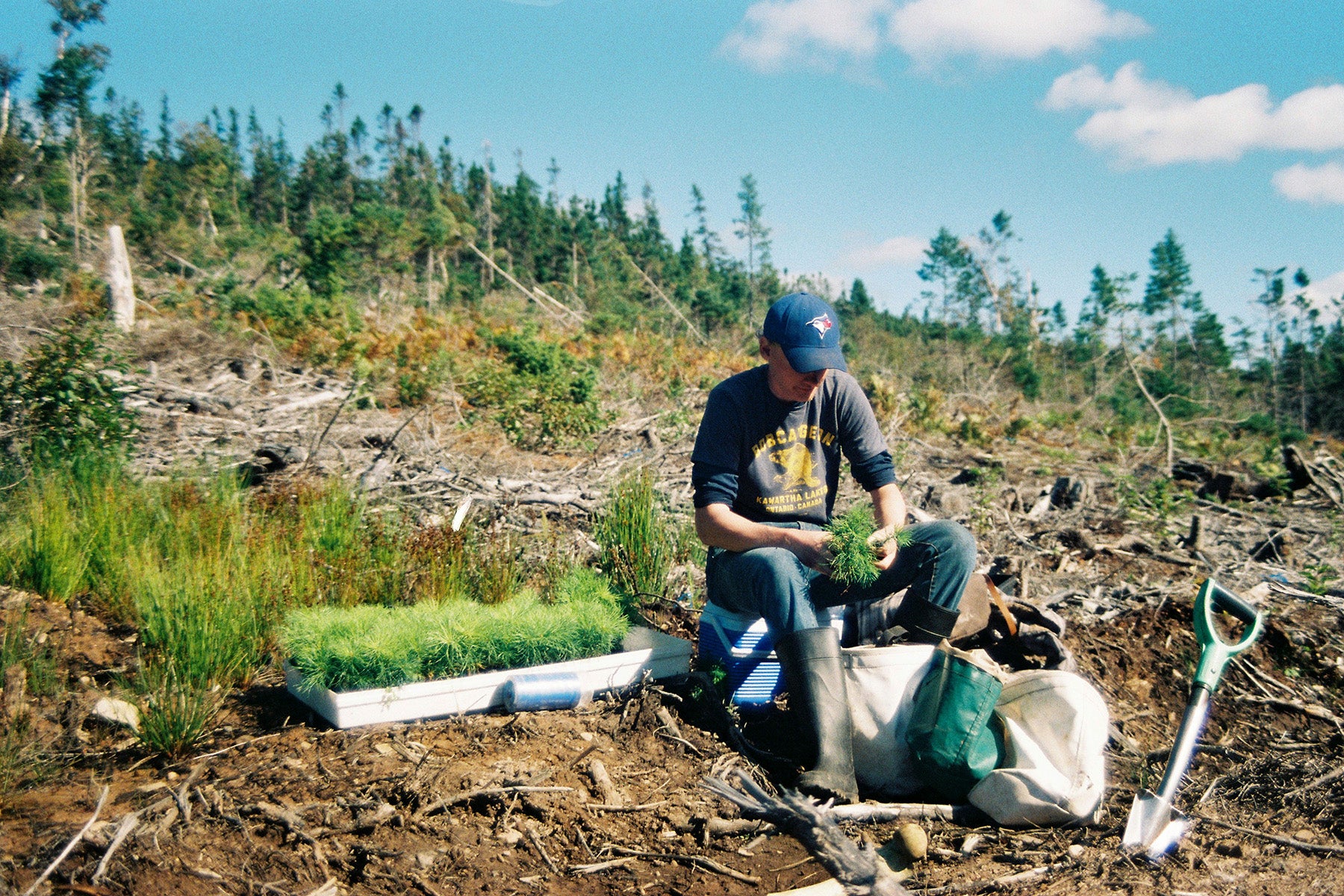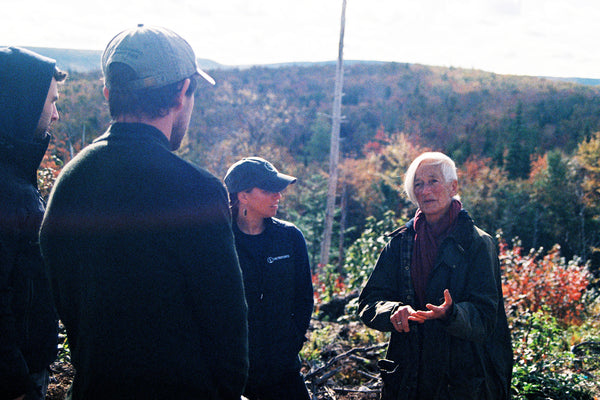In Cape Breton, Nova Scotia, 23,900 trees were planted to restore 15 hectares of land that is imbued with rich history. The purpose of this project is to re-establish white pine, red oak, and other native tree species across clear cut blocks on the coastal ridges of Cape Breton. As the planted trees grow, they will provide a range of benefits to the Margaree River watershed.
Together with our amazing reforestation partner, we are proud of the impact that this project has made on the surrounding community. Planting trees in areas that have been degraded or deforested has a powerful ripple effect for the surrounding environment and communities.
Historically, the land that this project worked to restore was devastated by a nearby pulp mill. Our planting partner is working to mend this land, and help surrounding communities reclaim their land.

A Community-Led Project
The benefits of this project extend beyond helping the environment, including employing six tree planters from the local area and encouraging the largest nursery in the Canadian Maritimes to grow more stock of white pine, red oak and other species.
The plantation of red oaks on the coastal ridge will create new recreational opportunities for the local community. The restoration sites themselves will also become field trip destinations. This will allow teachers, students, and parents alike to learn more about the importance of reforestation and restoration.

Ecological Benefits
After the Revolutionary War in the US, decommissioned officers of the British Army were granted the right to extract natural resources from the ridges and valleys of Cape Breton Island. Because it was the fuel of choice for England’s furnaces, red oak fetched a high price at the time — and white pine made excellent masts for the schooners and brigs of the Royal Navy.
These timber marauders severely degraded the ecology of western Cape Breton Island. As a result, the Gaels, who migrated there after the Highland Clearances of Scotland, encountered a denuded and radically altered landscape in which to settle.
Through replantations of white pine and red oak, this project pays homage to the history of Cape Breton and reporesents an important step towards restoring its ridges and valleys into a healthy and diverse Wabanaki Acadian Forest.
This restoration will allow biodiversity to thrive, benefitting several species of plants, animals, and fungi. However, the greatest ecological benefit over time is the precedent that has been set for private landowners to explore regenerative woodlot management plans. While the pulp and paper mill has historically searched for neglected woodlots to clearcut and replant with monocultures on a 35 year rotation, this project is the first large-scale ecological replantation project in Inverness County to challenge that model.
As momentum grows amongst private landowners, more regenerative plantation projects will be possible, benefitting the forest ecosystem, watersheds, and communities for generations to come.

Here’s How You Can Support This Project
It’s so important that we work to restore the environment for future generations, and that means we need to help empower community members with the resources they need to impact their land for the better. This planting project empowered individuals to become involved in their communities and help restore vital land. We are thrilled to support this work, and we are so excited to see what the future holds for this beautiful forest and its local communities.
Want to support amazing projects like this? Plant a tree in Nova Scotia today!
